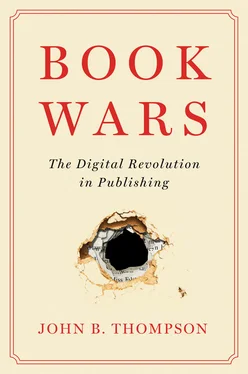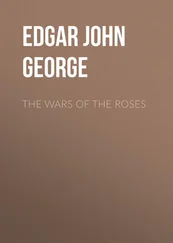Touch Press worked out a deal with Walt Disney Animation Studios in autumn 2012 and began working on the app in earnest in December, though much of the preparatory work had been done before then. A substantial part of Touch Press’s staff was assigned to this app – about ten people in total from the Press’s side, plus those on Disney’s side who also contributed to the project – and it required a good eight months of intensive work. The budget was substantial – around £400,000. Theo took on the role of author, and he wrote the text as the app was being developed. The app recounts the history of animation at Disney in a way that is thematically structured, with chapters or sections covering plot, character, the art of animation, visual effects, sound, etc. The text is interwoven throughout with a rich array of visual material that comes to life at the touch of a finger – the interweaving of text and image is so integral to the design that when you touch on a character to bring it to life, the text itself breaks up and reforms on the page to make way for the character, which now assumes centre stage. There are clips from Disney cartoons, starting with ‘Steamboat Willie’, the first Mickey Mouse cartoon that was released in 1928, and from all of the great Disney animated films – Snow White and the Seven Dwarfs , Bambi , The Lion King , Winnie the Pooh , Frozen , etc. Interactive tools are used to explain the principles of animation and enable younger users to have a go at producing simple animation effects, like adding and removing layers and creating movements. The app was released on 8 August 2013 at $13.99 and was immediately selected by Apple as Editor’s Choice, which ensured that it was featured on the front page of the App Store.
The release of the app was timed to coincide with the D23 Expo, the biennial exposition of the official Disney fan club which took place in Anaheim, California, on 9–11 August. This helped to give the app visibility in the community of Disney fans and contributed to a steep spike of sales during the first couple of weeks after its release. Sales then followed the normal pattern of app sales, falling off quite quickly and ticking over at modest levels – until, that is, Disney Animated was selected by Apple as iPad App of the Year for 2013. When this was announced on 16 December, it was followed by another steep spike in sales that lasted until the end of December, during which they sold another 20,000 or so. In January, Disney Animated won yet another accolade: it was named Best App in the Academic/Reference category of the 2014 Digital Book Awards, prizes that are handed out annually as part of the Digital Book World conference. It also won a Children’s BAFTA in the Interactive: Adapted category, and the Best Adult Digital Book in the Bookseller ’s FutureBook Innovation Awards. In terms of critical recognition and awards, Disney Animated could hardly have achieved more: this is about as close as you can get to a clean sweep in the world of the book-as-app.
And yet, despite all this, Disney Animated was not an unqualified success in commercial terms. Given the costs involved in developing the app, the number of staff that was involved over a period of more than eight months, the extra effort and expense that was put into marketing, and the distribution of revenues between the partners, Touch Press needed to sell 100,000 copies to recoup their costs, and needed to sell considerably more than this – 300,000, maybe even 500,000 – to make a real financial contribution to the company. The app did well, but not as well as it needed to do to demonstrate that the business of developing premium apps of this kind is viable and sustainable in the medium to long term. ‘Disney Animated was a critical litmus test for us because it was a beautifully produced app into which we poured our soul, people worked nights and weekends and we couldn’t have made it better. It’s also on a popular subject that has deep roots in popular culture – the history of animated film is a subject that should interest lots of people. And, by God, it had Disney behind it – a bigger marketing machine it would be hard to find. And yet it ended up selling 70,000 units in the first five or six months. What this tells us is that our business model doesn’t work’, reflected Max. ‘We built this company and secured investment on the assumption that we could repeat The Elements. You make a beautiful title, very difficult to make, you sell large numbers and that’s a profitable, exciting business. You rinse and repeat, you scale up and you have a company that’s worth a lot. No.’ The sense of disappointment, conveyed by the hard reality of the ‘No’, was palpable. Max and his colleagues had spent four years embarked on an ambitious project committed to the invention of a new kind of digital book, building a team of around thirty talented staff who were able to exploit to the full the new media of the app and the iPad, and now they were faced with the stark realization that it could all be in vain. Nice idea, but it just doesn’t work.
Why not? ‘It’s partly because the ground has been moving under our feet as we’ve been working’, explained Max. ‘When The Elements came out, it was one of the very few games in town. And if you really wanted to see what your iPad could do, that’s what you got. Now there are over a million apps in the App Store and most of them are free.’ The number of apps was increasing and the average price was getting lower over time. The numbers bear him out. In January 2015, Apple reported that there were more than 1.4 million apps available in the App Store, and more than 725,000 of these were made for the iPad. Around 40,000–50,000 new apps were being added every month. Most analyses show that the vast majority of apps in the App Store – over two-thirds – are free. Many free apps contain In-App Advertising and offer In-App Purchases of various kinds – what’s commonly referred to as the ‘freemium’ model – but they are free at the point of download. After free apps, the most common price point is the cheapest one, 99¢ – they account for just under 50% of all paid apps. Apps priced at $1.99 are the next most popular tranche, and they comprise nearly 20% of all paid apps. Apps priced at $1.99 or less account for 89% of all apps available in the App Store, and they account for 66% – two-thirds – of all paid apps. 10From the consumer’s point of view, buying an app is a risk: if you pay $10 for an app and don’t like it, in all likelihood that’s $10 down the drain. ‘Because of that’, explained one app developer, ‘apps tend to be either lower priced and you try to sell more units or tend to be free and use In-App Purchase as the way to get money from people.’
For publishers like Touch Press, these developments posed two big problems. First is the problem of visibility – or ‘discoverability’, to use the term that is often used in publishing circles. How do you get your apps noticed in a world where there is only one store which is filled with over a million apps, and to which 40,000–50,000 new apps are being added every month? Book publishers often complain about how the dwindling number of bricks-and-mortar bookstores, with the loss of shop windows, display tables and front-of-store browsing space, is making it harder and harder for their books to get discovered, but compared to the challenges facing app developers, the retail environment of book publishers looks like an embarrassment of riches. App developers are launching their app in a world where there is only one store with only one storefront controlled by one player that selects and features a few apps each week entirely at its discretion, and tens of thousands of new apps are being added every month to this store which already holds over a million apps. You have to hope and pray that your app will get featured in that storefront and, better still, get selected as Editor’s Choice because without that, you’re screwed – a tiny speck lost in an ocean of content. Sure, there are some places where you can get reviews of a new app that will help to get it noticed, but these are nowhere near as numerous and varied as the review spaces still available to book publishers. And then there’s the problem of price: with two-thirds of all apps downloadable for free, and nearly 90 per cent of all apps priced at $1.99 or less, how do you persuade consumers to spend $13.99 on one app? In a world where information goods are increasingly free or very cheap, how do you overcome the risk factor and get consumers to pay for quality?
Читать дальше












